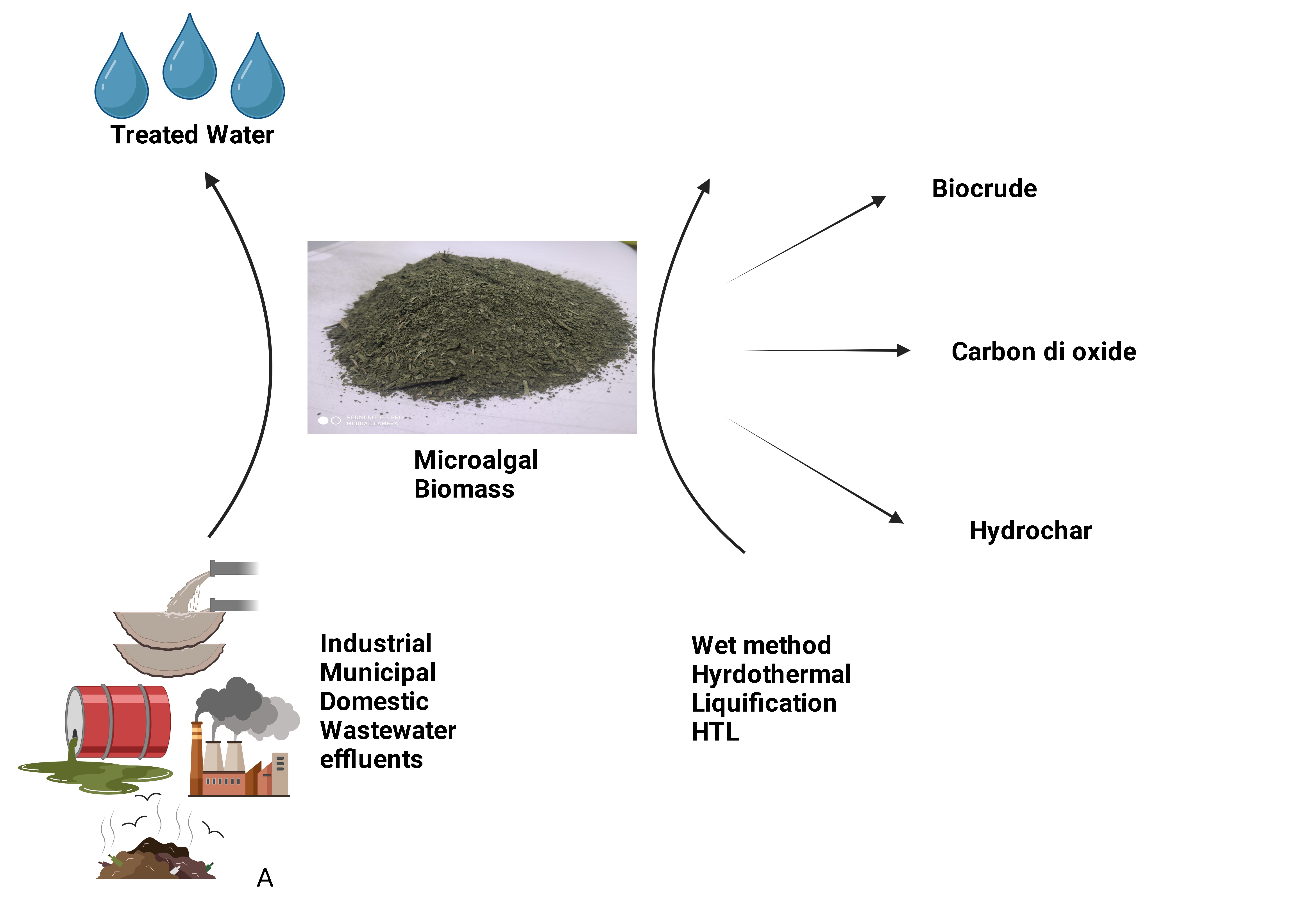
Hydrothermal liquefaction (HTL) is involved in concurrently treating both sewage water and generating biofuels. It involves the analysis of various operating parameters, such as pressure, catalyst temperature, and reaction time, to determine the productivity and physiochemical properties of the resulting bio-oil. The critical assessment of over 100 algal strains, compared on the basis of their growth kinetics in different wastewater environments and their HTL-based yields, identified Auxenochlorella pyrenoidosa and Microchaete spirulina strains as the most suitable ones for optimised municipal wastewater treatment. Additionally, other strains like Chlorella sorokiniana, Tetradesmus obliquus, and Desmodesmus abundance are found to be effective for heavy metal remediation in municipal wastewater due to their high biosorption capacities. Furthermore, certain microalgal strains, namely Auxenochlorella pyrenoidosa, Botryococcus braunii, Microchloropsis gaditana, and Microchaete spirulina, were described as promising microalgae in the production of high crude oil yields through the HTL technique. The current review highlights the integrated approach of sustainable and economical HTL techniques using the best microalgal strains as a technologically and environmentally feasible solution selected through a systematic protocol for sewage water treatment and biofuel production.
Total file downloads: 41